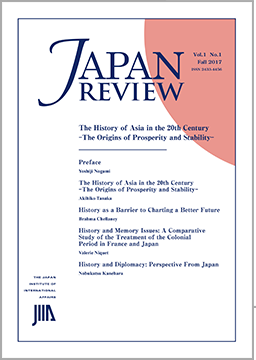Column/Report
|Top page|Print/Mobile page|Tweet
JIIA Strategic Comments(No.13):
The Osaka G20 Summit: The challenges and future of the G20
Yoichi Otabe (Visiting Research Fellow, JIIA / Former Sherpa of Japan)
The Osaka G20 Summit has already been subjected to various assessments. As for the case with the G7, it will have to be assessed according to the subsequent policy implementation by the participating countries. Below are some observations on praiseworthy aspects of this summit in view of the course the G20 Summit has taken since its inception and the outcomes achieved at Osaka.
1. Difficulties facing the G20
(1) The difficulties inherent in the G20 structure that have come to light already since the 2009 Pittsburgh Summit, held after overcoming a crisis reminiscent of the Great Depression, are differing perspectives among members on policy decisions due to their varying degrees of socioeconomic development and the requirement of a consensus among more than 20 participating members (see the author’s paper in the May 2011 issue of Kokusai Mondai).(2) Similar to the G7, by the motives of the chair countries for the individual summits, we have witnessed the proliferation of topics addressed, and associated with that, the substantial increases of the number of meetings. Against this development, the summit meetings risk to turn into superficial gabfests if the chair countries are unable to steer the process properly. Sooner or later, the scope of the summit’s activities and the approaches thereto will need to be defined.(3) Furthermore, the difficulties faced at the G20 can be attributed to the weak global system that are at the root cause of the ongoing crisis of multilateralism which we observe after the historic structural changes of international relationship brought about with the end of the Cold War.
2. Future development potential of the G20
As stated above, the G20 faces a variety of challenges and difficulties, but new developments not seen in the early G20 Summits have emerged from the discussions and outcomes of recent summits, including the latest.
(1) A role in international rules setting
With the formulation of international rules to address various socioeconomic issues unable to keep pace with rapid technological innovation and the realities and prospects of globalization stemming from such innovation, it has heretofore fallen to the OECD or G7 to attempt to fill the gap. In light of the world’s current economic structure with the rise of emerging countries as a backdrop, this approach on its own has inherent limitations, as was the case during the financial and economic crisis.
Under such circumstances, the recent collaboration among the OECD, the G7 and the G20 on Base Erosion and Profit Shifting (BEPS) in international taxation is noteworthy. At Osaka, a number of issues pertaining to the digital economy, one of the greatest interests among many members, the G20 proposed an overall framework dubbed as the “Osaka Track” and followed the OECD’s efforts pertaining to principles governing digital taxation and artificial intelligence (AI). These moves are extremely interesting reflections of maturity of policy approach of non-developed members of the G20 who had previously exhibited physiological resistance to the OECD and the G7.(2) Increased awareness by developing country members on the common challenges
Among major success of the Osaka Summit process, one that did not garner much attention in Osaka in part because an agreement had been reached at the pre-summit meeting of finance ministers and central bank governors held in Fukuoka, were the basic agreement on the character of global imbalances (current account imbalances) and necessary steps to be taken to increase debt transparency and sustainability. Although these two issues had been addressed at the earlier G20 Summits, discussions have been stalled out for some time. As on the former discussions were focused almost entirely on China, and on the latter developing country members had concerns that the issue would be used by the developed countries as a pretext for holding off aid. The progress can be attributed to a greater awareness and acknowledgement by the G20 as a whole of the economic circumstances of individual members and the changes taking place in the global economy.
In the same vein, new policy coordination and cooperation at the G20 will be required to cope with the changes in the global economy, and specific areas will likely to surface where such coordination/cooperation is possible.
3. Conclusion
The G20 Summit initially met five times over a period of less than two years between the November 2008 Washington Summit and the September 2010 Seoul Summit. Once the financial and economic crisis was overcome, however, the summit became an annual event and, like the G7 Summit, the preparatory processes and follow-ups between summits became important elements in fulfilling the summit’s raison d'être1.
In that sense, the G20 has changed somewhat but, to dispel the arguments put forth by some prominent figures that the G20 is no longer necessary, the points made in 1 and 2 above should be considered to take advantage of its particular features with trial-and-error efforts.
(August 8, 2019)
1 The short interval between the Buenos Aires Summit of last December and the latest Osaka Summit is a recent exception.
(2019-09-25)
Topics
Membership
 Archive of high-quality scholary works translated from Japanese to English
Archive of high-quality scholary works translated from Japanese to English
A highlight of JIIA's recent activities and a summary of its organization.
Publication
Journal

Kokusai Mondai (International Affairs)
No.680 April 2019 "Protecting Human Rights via International Procedures"
Vol.2 No.4 Spring 2019
"Japan and the Post-World War II Liberal International Order"
Books
 What Do Alliances Mean to the US?
What Do Alliances Mean to the US?
(Fumiaki Kubo ed., 2013)






